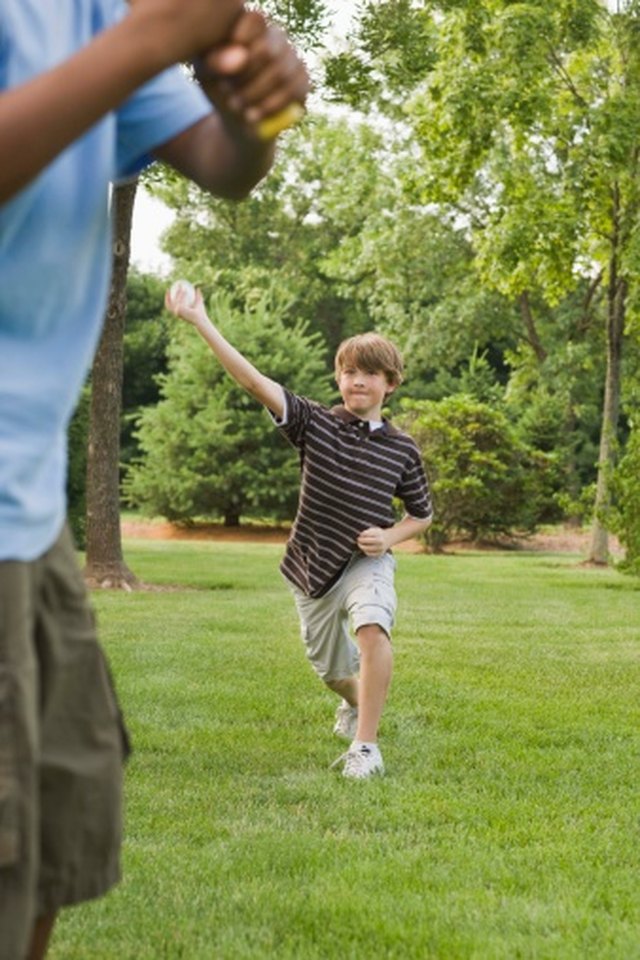Four Types of Ball Throws

There are many sports that feature some sort of throwing motion. It is a prominent activity in baseball, softball, basketball, football and soccer, as well as many other recreational games like dodgeball and kickball. Each sport makes a unique contribution on how a ball should be thrown and which motion is the most effective.
Overhand Motion
The overhand throwing motion is the most common type of throw in baseball and football. To complete this throw, stride with your nondominant foot toward your target. As you are striding, quickly bring your dominant hand back until the height of your elbow is equal to the height of your shoulder while facing your dominant arm upward at a 90-degree angle. If your arm is not at a 90-degree angle, significant strain is placed on your elbow and shoulder, increasing the likelihood of an injury. After ensuring that you achieved a right angle, point your nondominant arm toward your target. Then bring your throwing arm down and forward toward the target, releasing the ball at the point appropriate to reach your target. As your throwing arm begins to come forward, drop your nonthrowing arm to the side. The timing of the throw should be such that you release the ball as your nondominant foot is hitting the ground.
Underhand Throwing Motion
The underhand throwing motion is utilized primarily in fast-pitch softball. This motion should begin with both of your hands together about waist high. In addition, both of your feet should be placed together facing your target. Stride forward with your nondominant foot. As you are striding, bring your dominant hand up and back, mimicking the motion of a windmill. Bring your hand around until it is at the height of your dominant knee, at which point the ball is to be released. As you are releasing the ball, the nondominant foot should be coming down and planting. The timing of the pitch should be such that the ball is released as the foot hits the ground.
Overhead Throw
This is the most common throw in soccer for balls that have gone out of bounds on either side of the field. The throw is made by positioning both feet on the ground, taking the ball in both hands back and over the head, and without breaking your momentum, releasing the ball with both hands. To increase the velocity of your throw, try stepping or running into your throw. However, to make sure your throw is legal, make sure both feet are planted on the ground at the time you release the ball.
Two-Hand Chest Pass
This is commonly used in basketball to pass the ball between teammates. Hold the ball with both hands at your chest with both fingers spread around the ball. Stride forward with your nondominant foot and push off of your other foot. As your nondominant foot hits the ground, release the ball. To ensure the crispness of this pass, try to point your thumbs at your teammate after releasing the pass. Another common variety of this pass involves bouncing to your teammate. Follow the same motion but instead of trying to make it to your teammate in the air, bounce it to him in such a way that the ball will bounce to his waist.
Writer Bio
Andrew Fontenot has been a journalist since 2003. His first job was covering the tension between rural villages and cities in India. His work on India has been published in a development magazine called "The International Proclaimer." Fontenot has a Bachelor of Arts in education from the University of Tennessee.
